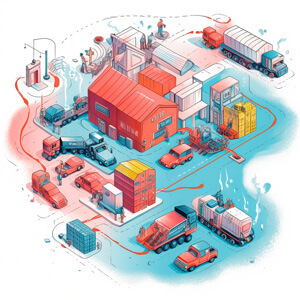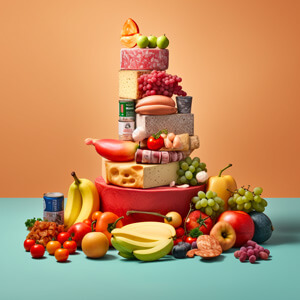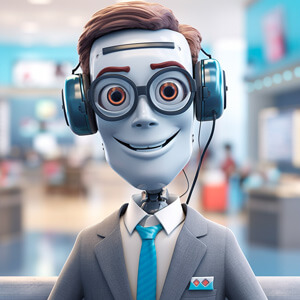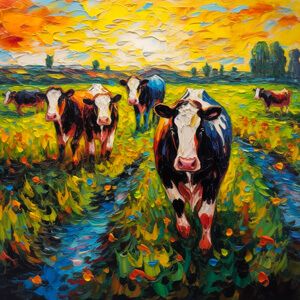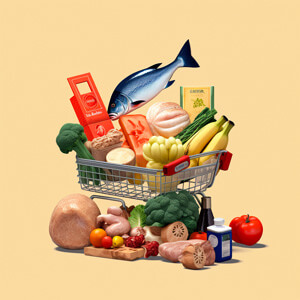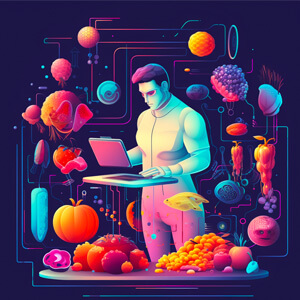-
![]()
Flavor Profiling and Product Development
For CPGs, companies like Gastrograph use generative AI tools to create flavor profiles based on a database of consumer preferences. Leveraging machine learning, they analyze vast arrays of consumer feedback to anticipate food trends and the public reception of new products.
-
![]()
Supply Chain Optimization
Generative AI also shows promise in streamlining supply chains. Companies like Blue Yonder use AI algorithms to predict demand and optimize inventory, with the underlying goal of mitigating food waste, increasing efficiency and improving timely delivery of food products to retail shelves.
-
![]()
Automated Food Processing and Quality Control
The food industry is also leveraging AI for quality control. Companies like AgShift and ImpactVision use AI to automate food inspection, reduce waste and improve food quality. They use computer vision — a branch of AI — to rate the quality and spot defects in fruit, vegetable and meat products more accurately than the human eye can.
-
![]()
Customer and Consumer Relations
A national fast food chain collaborated with ConverseNow to create a virtual ordering assistant that can answer multiple calls — in English and Spanish — at the same time. Other food chains are also incorporating similar technologies into their ordering process. The real-time data collection that has been created by these new customer-facing systems serves the consumer more efficiently than ever before.
-
![]()
Farming and Raising Livestock
New AI systems are helping farmers with age-old challenges, including pest mitigation, weather unpredictability and disease detection. Smart farming — the use of AI to optimize growing conditions, identify illness in livestock and improve the producer’s yield — is already being used. Through image- and data-gathering sensors, AI can be trained to understand the factors that affect food quality — changes in soil temperature, humidity, etc. — and subsequently catch food disease outbreaks early, reducing waste and increasing food safety. Machine learning may even help discover useful patterns in genomes that are less identifiable with traditional methods.
Companies like Planetix are also offering apps that give farmers around the world the ability to diagnose crop health using only a smartphone. Other companies are using facial-recognition AI to track animal health with the goal of alerting farmers to disease outbreaks ahead of physical symptoms.
-
![]()
Optimizing Prices and Discounts
AI also shows promise in its ability to optimize and target digital couponing by interpreting data collected from past promotions. This can help retailers understand how customers might react to different price strategies and discounts. Over half of top retailers in a recent survey said they planned to implement some form of AI pricing technology in the near future.
-
![]()
Generative AI for the Consumer
The use of AI in the food system won’t be reserved for retailers or CPGs. Companies like Plant Jammer and Frichti have created AI services for the average consumer. Users input their preferences and food restrictions, and even the ingredients in their fridge, and these services can create endless combinations of unique dishes.
AI is also being put to use in the growing personalized nutrition and wellness sector. Nutrino, an AI-based digital health platform, creates individual diet plans after learning a user’s personal weight, nutrition goals and health conditions.
Pitfalls of AI
AI is already poised to massively transform the food industry, but these systems aren’t magic wands, nor are they without their share of risks or costs. Generative AI systems can’t distinguish between true and false information. They also have the unfortunate habit of sometimes just making up data and information. Needless to say, for important decisions, generative AI can’t be fully relied on.
These technologies have other challenges. As we embrace the benefits, it’s equally important to navigate the challenges — such as increased energy use or job disruption — to create a balanced, sustainable and inclusive food ecosystem for the future.
The datasets used to train AI are colossal and require massive amounts of energy to run. By one estimate, training one large deep-learning model produces 626,000 pounds of carbon dioxide. A single data center can consume the amount of electricity equivalent to power 50,000 homes. Increasing transparency regarding the environmental cost of these models will be crucial in setting the AI field on a more environmentally sustainable path.
Potential disruption to the economy and the job market is another concern. According to one study, potentially two-thirds of all jobs will be impacted by generative AI and up to a quarter of all work tasks being performed today might be automated using the technology. Worldwide, generative AI may replace the equivalent of 300 million full-time jobs.
Forward thinking food companies will have to weigh the costs and benefits and participate in the cultural conversation as we collectively explore this new landscape. University research centers, such as the AI Institute for Next Generation Food Systems, will help develop the best policies and practices. The institute, which is dedicated to accelerating the use of AI to optimally produce, process and distribute safe and nutritious food, will be helpful to understand the evolving impact of this nascent technology.






